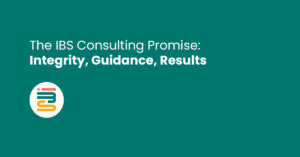Did you know that over 1 million international students are currently studying in the US? (ICEF Monitor, Open Doors Report). That’s a huge number and every single one had to start somewhere, just like you.
Let’s be real. Figuring out how to move across the world for school is a lot of work. Where do you even begin? How do you find schools with good scholarships? What’s the application process like? What documents will they ask for? How much will it all cost?
Every year, thousands of students take that step. Some apply to schools with low tuition. Some choose top-ranked universities. Some look for strong support for international students. But all of them have one thing in common: they had questions too.
That’s why this guide exists. To help you with what matters most:
- Picking the right schools
- Finding scholarships
- Applying without stress
- Getting your visa
- Understanding tuition
- Meeting deadlines
- Preparing for life in the US
- And settling in after you arrive
Whether you’re still gathering info or already have a shortlist, this guide will walk with you.
This article runs through everything you need to know about Studying in the US for International Students; step by step.
Read More: Study in the UK for Beijing Students: Admission Requirements and Deadlines
Why Choose the U.S. for Higher Education?
The following are a few reasons why you should choose the U.S for higher education.
Curious about the advantages of pursuing your studies overseas? Reach out to IBS Consulting and book your FREE consultation to learn more!
Book Your Free Consultation
Global Recognition of U.S. Degrees
A degree from a U.S. university is widely respected and recognized around the world. Whether you’re pursuing a career in engineering, business, or the arts, a U.S. degree can open doors globally. This recognition stems from the rigorous academic standards and innovative teaching methods employed by U.S. institutions.iee.com
Access to World-Class Universities
The U.S. is home to a diverse range of universities, from prestigious Ivy League schools to community colleges. This variety ensures that international students can find programs that align with their academic interests and financial considerations. Notably, over 1.1 million international students chose to study in the U.S. in the 2023–2024 academic year.
Diverse Culture and Learning Environment
Studying in the U.S. provides more than just academic growth. International students immerse themselves in a multicultural environment, interacting with peers from various backgrounds. This exposure enhances global perspectives and enriches the overall educational experience.
Read More: Study in San Francisco for International Students: Application Requirements & Deadlines
Opportunities for Work and Internships
Many U.S. universities offer practical training opportunities through programs like Curricular Practical Training (CPT) and Optional Practical Training (OPT). These programs allow international students to gain hands-on experience in their field of study, making them more competitive in the job market.
The Application Process to the U.S. Universities
Let’s look at the application process to the U.S Universities and how you can apply yourself.
Researching U.S. Universities
Begin by identifying universities that offer programs aligned with your interests and career goals. Consider factors like location, campus culture, tuition fees, and available support services for international students. Utilize resources like the World Higher Education Database to gather information. WHED Portal
Choosing the Right University
When selecting a university, think about:
Program Offerings
Does the university offer the course you’re interested in?
- Location: Do you prefer a bustling city or a quiet town?
- Budget: Consider tuition fees and living expenses.
- Support Services: Look for universities that offer strong support for international students.
Read More: Study in Canada for Boston Students Made Easy: Visa, Cost & Schools
Required Documents and Qualifications
To apply, you’ll typically need:
Academic Transcripts
Records from your previous schools.
Standardized Test Scores
Depending on the university, you may need SAT, ACT, TOEFL, or IELTS scores.
Interested in learning more about the benefits of studying abroad? Call IBS Consulting to schedule a FREE consultation right away!
Book Your Free Consultation
Letters of Recommendation
Usually from teachers or mentors.
Statement of Purpose
An essay explaining your academic interests and career goals.
Ensure you meet the minimum GPA and test score requirements for your chosen universities.
Deadlines and Important Dates
Application deadlines vary by university and program. Some universities have early decision deadlines, while others have rolling admissions. It’s crucial to check each university’s website for specific dates and plan accordingly.
Read More: Study in the UK for Shanghai Students: Admission Requirements and Deadlines
How to Apply for a U.S. Student Visa
Visa Types for International Students. To study in the U.S. as an international student, you’ll need a student visa. The most common types are:
1. F-1 Visa
For full-time academic students.
2. J-1 Visa
For exchange visitors participating in approved programs.
3. M-1 Visa
For students in vocational or non-academic programs.
The Process of Applying for an F-1 Visa
Get Accepted
Apply and get accepted into a SEVP-certified U.S. school.
Receive Form I-20
The school will send you this form, which is essential for your visa application.
Pay the SEVIS Fee
This fee supports the Student and Exchange Visitor Information System.
Complete the DS-160 Form
This is the online nonimmigrant visa application.
Schedule a Visa Interview
Book an appointment at the U.S. embassy or consulate in your country.
Attend the Interview
Bring all required documents and be prepared to answer questions about your study plans.
For detailed guidance, refer to the U.S. Department of State’s Bureau of Consular Affairs.
Visa Interview Tips and Expectations
- Be Honest: Clearly explain your study plans and intentions to return home after your studies.
- Show Financial Stability: Provide evidence that you can support yourself financially during your stay.
- Know Your Program: Be familiar with the course you’ve chosen and why you selected that university.
For more tips, visit American University’s Visa Interview Tips. American University
Common Challenges in the Visa Process
- Incomplete Documentation: Ensure all your forms and documents are complete and accurate.
- Financial Proof Issues: Demonstrate that you have sufficient funds to cover tuition and living expenses.
- Application Delays: Start the process early to avoid last-minute issues.
Financial Aid and Scholarships for International Students
Studying in the US for international students can be expensive. But don’t let that stop you. Many students just like you have found smart ways to pay for school without getting stuck in huge debt. One of the best ways is by looking into financial aid and scholarships.
Types of Financial Aid Available
Here’s what you need to know:
>Contact us
Merit-Based Scholarships
These are for students who have very good grades or special skills, like sports or music. If you’ve worked hard in school, this can be your reward.
Need-Based Grants
These are given if your family doesn’t have enough money to pay for school. You don’t need to pay these back.
Work-Study Programs
These allow you to get a small part-time job on campus. You earn money while studying. It’s helpful and flexible.
Most US universities for international students offer one or more of these options. Just check their website or talk to the international student office.
How to Find Scholarships for International Students
Let’s break it down step by step. You need to act early and stay organized.
Step 1: Check University Websites
Every university has a page for financial aid. Go there. Look for the section on “international students.” You’ll find details on what’s available and how to apply. Example: NYU Scholarships for International Students
Step 2: Explore Government Scholarships
Your country might offer help for students who want to study abroad in the US. These programs are usually listed on your country’s Ministry of Education website or embassy pages.
Step 3: Look at Private Foundations
Some groups and NGOs offer scholarships too. They don’t care which country you’re from, just that you have the drive.
When to Apply
- Start Early: Some deadlines are 8–12 months before school begins.
- Prepare Documents: Your grades, passport, and personal statement are often required.
- Double-Check Requirements: Each scholarship has different rules. Some may want English test scores like TOEFL or IELTS.
How to Budget for Studying in the US
You need to know how much to plan for. Here’s a simple breakdown:
Tuition Fees
These can range from $10,000 to $60,000 per year depending on the school. Public schools are usually cheaper than private ones.
Living Costs
You’ll spend on housing, food, transport, phone, books, and fun. Average cost? Around $1,000–$1,500 per month.
Health Insurance
Most US universities for international students require this. It can cost about $500–$2,000 per year.
Tip: Use a spreadsheet to track your monthly expenses. It helps avoid surprises.
Finding Housing and Living Arrangements
Choosing where to live matters. Let’s look at the two main options.
On-Campus Housing
Dorms are close to classes and may include food. Good for meeting people and staying safe.
Off-Campus Housing
Renting an apartment gives more privacy but means handling bills, transport, and cooking.
Always research early. Look for reviews, cost, distance to school, and if public transport is nearby. A good source to learn about housing and costs is Investopedia.
Read More: Study in the UK for Shanghai Students: Admission Requirements and Deadlines
Healthcare, Banking, and Transportation in the US
It’s more than just books and classes. Life stuff matters too. Here’s how to get set up:
Healthcare
Buy health insurance as soon as you arrive. Some schools include it in your fees. Know where the closest clinic or hospital is.
Banking
Open a student bank account. It helps you avoid international transaction fees. Look for banks with no monthly fees for students.
Transportation
Learn how public buses, subways, or trains work in your city. Some schools give free or discounted transport passes.
You can find local transit info on apnews.com or your university site.
Top Resources for International Students in the US
Being far from home is not easy, but you’re not alone. Every campus has tools to help.
Support Networks and Student Organizations
Join student clubs and groups. Why?
- Make Friends: Meet people from your country and others.
- Get Support: Ask questions and share experiences.
- Have Fun: Join cultural events, sports, and weekend trips.
These make your time more enjoyable and less lonely.
Legal and Academic Support
You’ll also get access to helpful offices like:
- International Student Office: They help with visas, work permits, and adjusting to life in the US.
- Academic Support Centers: Free help with essays, homework, and test prep.
- Career Services: Resume help, interview tips, and job fairs.
These services are there for you. Use them.
Conclusion
Choosing to study in the US for international students is a big step, but one that opens many doors. You’ll get a strong education, make global friends, and grow as a person. From getting a US student visa for international students to finding the right school and budgeting, the journey takes time, but it’s worth it.
If you’re unsure where to begin or need help finding schools, applying for scholarships, or understanding how to apply for a student visa to the US, you’re not alone. IBS Consulting is here to walk with you step by step.
We’ve helped many students successfully study abroad in the US, from picking the right school to submitting strong visa applications. Our team knows what it takes and can guide you from start to finish.
Ready to get started? Contact IBS Consulting today. Let’s make your dream to study in the US for international students a reality, without the stress.




